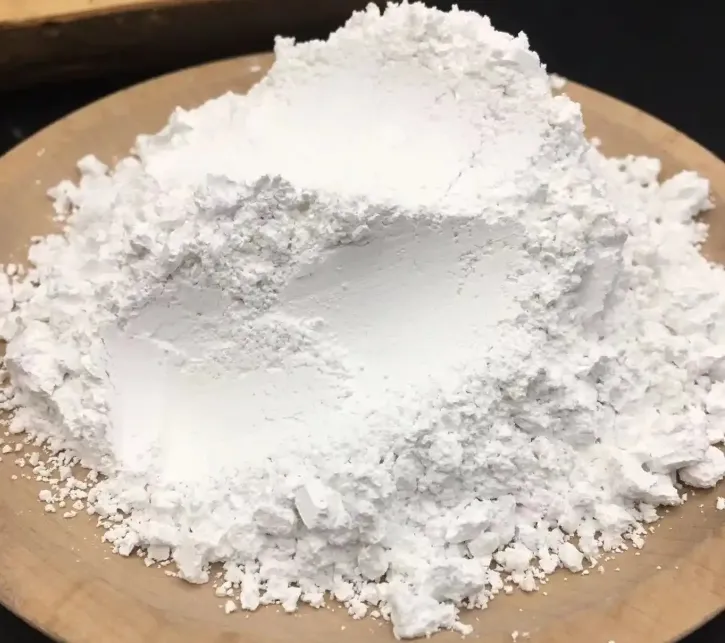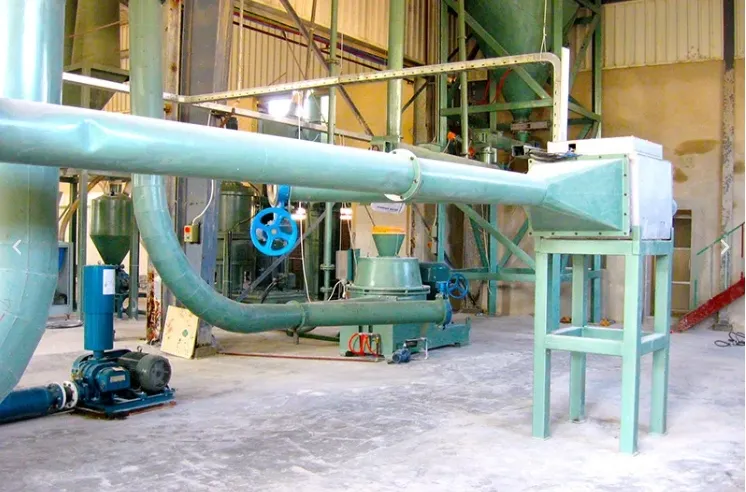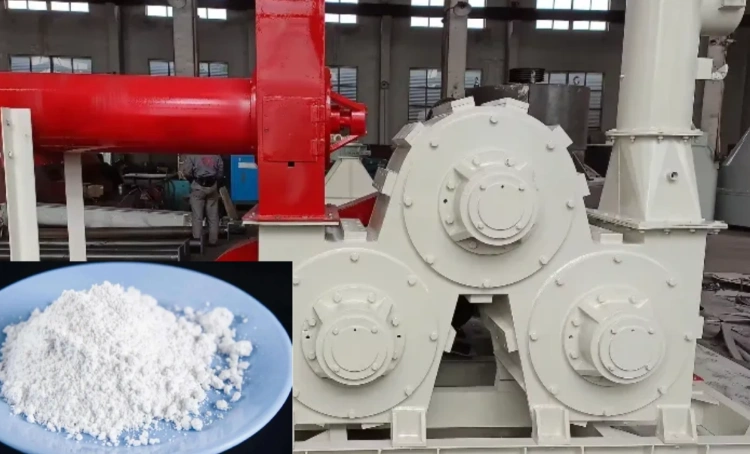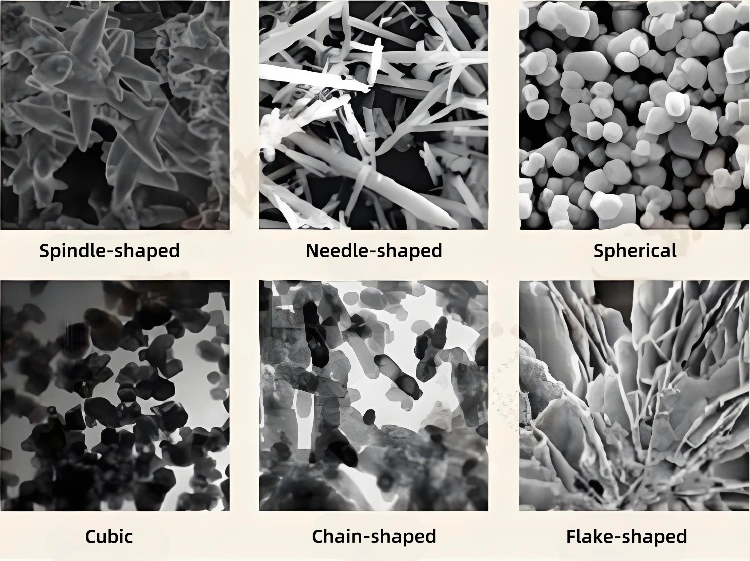Calcium carbonate is an important and widely used chemical material. As a reinforcing agent and filler, it is widely applied in industries such as rubber, paper, ink, coatings, plastics, food, and cosmetics. Heavy calcium modification enhances its performance in these applications. It not only increases product volume and saves base material but also reduces costs. Additionally, heavy calcium modification improves physical properties, printing performance, and dimensional stability of the products.

What is Heavy Calcium Carbonate ?
According to different production methods, calcium carbonate can be divided into light calcium carbonate and heavy calcium carbonate. Light calcium carbonate, also known as precipitated calcium carbonate, is produced using chemical processing methods. Heavy calcium carbonate, also known as ground calcium carbonate, is made by mechanically crushing natural materials like limestone, calcite, and chalk. There are differences in particle size and surface characteristics between heavy and light calcium carbonate, which leads to varying effects in their applications.
Compared to light calcium carbonate, heavy calcium carbonate has advantages such as low energy consumption, simple processing, and low cost. Its filling effect in industries like paper, plastics, construction, and coatings is significantly better than that of light calcium carbonate. However, there are still some issues in the production and application of heavy calcium carbonate that need improvement:
- Ultra-fine particle size of heavy calcium carbonate.
2. Development of specialized heavy calcium carbonate products.
An effective solution to these issues is the modification of heavy calcium carbonate to meet the requirements of various products.
Why is Surface Modification Necessary?

The main purposes of surface modification of heavy calcium carbonate are:
- To reduce the surface energy of heavy calcium carbonate and prevent agglomeration.
- To improve the dispersion of heavy calcium carbonate in the matrix.
- To enhance the interfacial affinity between heavy calcium carbonate and the matrix.
- To increase the specificity and functionality of modified heavy calcium carbonate.
Heavy Calcium Modification Methods
To achieve the best filling effect with modified heavy calcium carbonate, it is essential to consider its application field, processing methods, and blending partners. For different matrices and application areas, it is necessary to select the appropriate modifier and modification method. Next, we will introduce several surface modification methods and the chosen modifiers based on the different surface treatment processes of heavy calcium carbonate.
Physical Coating Modification
Physical coating modification involves mixing modifiers with heavy calcium carbonate in a certain ratio. Under the action of dispersing forces, the modifier adsorbs onto the surface of heavy calcium carbonate through physical forces like van der Waals forces or electrostatic attraction. This forms a single-layer, double-layer, or multi-layer coating.
To overcome the shortcomings of traditional dispersants and increase physical binding forces, a new type of super dispersant has been developed internationally since the 1970s.
Compared to traditional surfactants, super dispersants have the following advantages:
- They have a stronger bonding force with the surface of heavy calcium carbonate particles and almost no desorption.
- The long polymer chains can more effectively prevent the re-agglomeration of heavy calcium carbonate particles.
These advantages make super dispersant-modified heavy calcium carbonate promising for widespread use in industries like plastics, pigments, inks, and coatings.
Surface Chemical Modification
Surface chemical modification refers to a process where modifiers react or chemically adsorb onto the active sites on the surface of heavy calcium carbonate particles. This allows the modifier to coat the surface of heavy calcium carbonate, enhancing its compatibility and dispersibility with organic matrices. This process improves the processing performance and physical-mechanical properties of composite materials. Surface chemical modification mainly includes:
- Coupling agent modification
- Composite coupling agent modification
- Polymer coating modification
- Organic modification
Mechanochemical Modification

Mechanical-chemical modification involves using mechanical methods like grinding and friction to induce lattice displacement and changes in crystal form in heavy calcium carbonate powder.
At the same time, the temperature of the system rises, and internal energy increases. Large calcium carbonate particles continually break down into smaller, even micron-sized or nano-sized particles, enhancing the chemical activity of the surface. This makes the particles more likely to chemically bond with or attach to the modifier, reducing their internal energy and stabilizing the system, thus achieving surface modification.
In industrial production of heavy calcium carbonate, grinding and surface modification are usually carried out separately. However, if modifiers are added during the grinding process, it not only enhances the surface modification effect using physical mechanical forces but also prevents agglomeration caused by excessively fine particles.
Moreover, the modifier itself acts as an excellent lubricant and dispersant, reducing friction between particles. This helps the grinding process and protects the equipment, simplifying the process and improving the modification effect and efficiency of mechanical-chemical modification.
Surface Deposition Modification
Surface deposition modification involves using appropriate methods to precipitate modifiers onto the surface of heavy calcium carbonate. It is one of the most commonly used methods for surface modification of inorganic mineral pigments. This method is suitable for industrial production with a simple process. By controlling reaction conditions, it is possible to obtain the desired particle size and purity.
High Energy Surface Modification
High-energy surface modification refers to using methods such as high-intensity radiation, plasma, or ultrasound to modify the surface of heavy calcium carbonate.
The strong shock waves and dispersive forces generated during the process can significantly weaken the interactions between particles. This helps prevent agglomeration and aids in the dispersion of heavy calcium carbonate. However, the modification effect of this technique is not very stable, and it has high costs and complex operations. As a result, it is still difficult to achieve widespread application in actual production.
Conclusion
Surface modification is one of the essential processing technologies to improve the application performance, enhance versatility, and expand the market and usage of heavy calcium carbonate. The main development trends in surface modification of heavy calcium carbonate are:
- Optimizing the surface modification effect.
- Nanomization of modified heavy calcium carbonate.
- Green and environmentally friendly approaches.
- Transformation toward higher added value.
Epic Powder
Epic Powder, 20+ years of work experience in the ultrafine powder industry. Actively promote the future development of ultra-fine powder, focusing on crushing,grinding,classifying and modification process of ultra-fine powder. Contact us for a free consultation and customized solutions! Our expert team is dedicated to providing high-quality products and services to maximize the value of your powder processing. Epic Powder—Your Trusted Powder Processing Expert !
